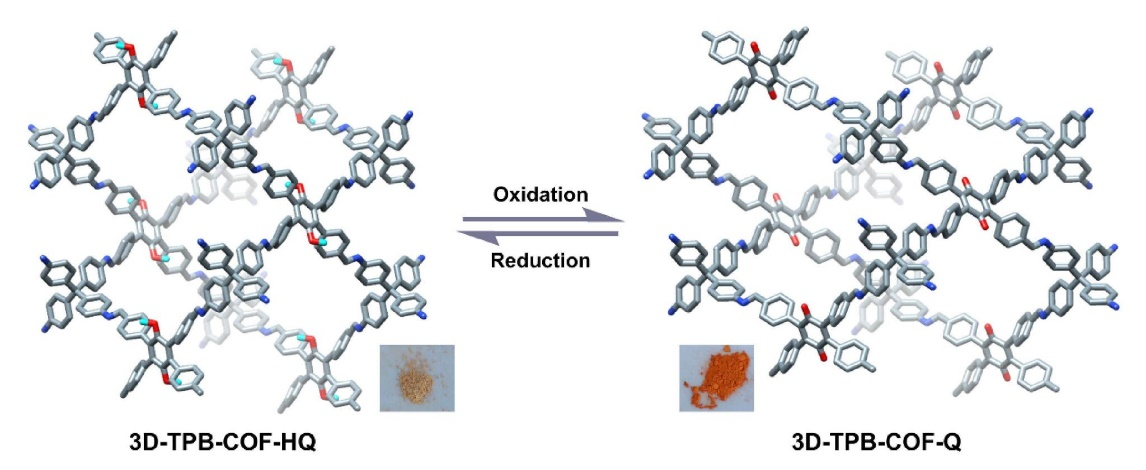On October 1, the international authoritative journal Nature Communication published online the latest findings of Prof. Wang Cheng’s team (College of Chemistry and Molecular Sciences, Wuhan University), whose research has resulted in the first stimuli-responsive three-dimensional covalent organic framework.
The paper, entitled Redox-triggered Switching in Three-Dimensional Covalent Organic Frameworks, has Gao Chao (PhD student of the class of 2020) and Dr. Li Jian (Peking University) named as co-first authors and has Prof. Wang Cheng and Sun Junliang (Peking University) named as co-corresponding authors.
The fact that organic molecules can reversibly change their structure or properties in response to external stimuli has received much attention. However, how to achieve their switching behaviors in solid state and construct stimuli-responsive materials remains a challenge. In his preliminary research (Chem. Mater. 2015, 27, 6426; Science Adv. 2016, 2, e1600480), Prof. Wang Cheng introduced molecular switches into three-dimensional metal-organic frameworks (MOFs), successfully achieving efficient control. Unfortunately, the moderate stability of MOFs is a limiting obstacle to the further application of stimuli-responsive materials. Covalent organic frameworks (COFs), an emerging class of porous crystalline polymers, have great potential for application in a number of fields. In principle, COFs can be used as a more suitable research platform since they can show enhanced stability in contrast to most MOFs, due to their robust covalent linkages in the framework. Nevertheless, the construction of 3D COFs has been considered a big challenge, and hence few relevant studies have been reported.
In a previous study, Wang Cheng’s team put forward a new strategy to construct the topological design of 3D COFs through [4 + 4] imine condensation reactions (J. Am. Chem. Soc. 2016, 138, 3302;Acc. Chem. Res. 2020, DOI: 10.1021/acs.accounts.0c00357). Based on that strategy, they constructed the first redox-triggered three-dimensional COF (3D-TPB-COF-HQ). The addition of oxidant and reductant enables hydroquinone and quinone in the framework to undergo a reversible transformation from a single crystal to a single crystal. Meanwhile, the modification of pore environment during the transformation process leads to a much higher CO2/N2 selectivity. It is worth mentioning that the process is highly reversible and cyclic, which can be repeated at least three times. This research clearly indicates that 3D COFs can provide an ideal platform for the efficient tuning of organic molecular switches in solid state, as well as constructing new stimuli-responsive porous materials.

This research has received financial supports from the National Natural Science Foundation of China, the Hubei Provincial Innovation Research Group, the Fundamental Research Funds for the Central Government-Affiliated Universities, the Swedish Research Council (VR), and the Knut and Alice Wallenberg Foundation (KAW).
Link to the paper: https://www.nature.com/articles/s41467-020-18588-1
Written by Hua Yuan
Rewritten by: Wu Xingwen,
Edited by: Zhu Tong, Sylvia and Hu Sijia